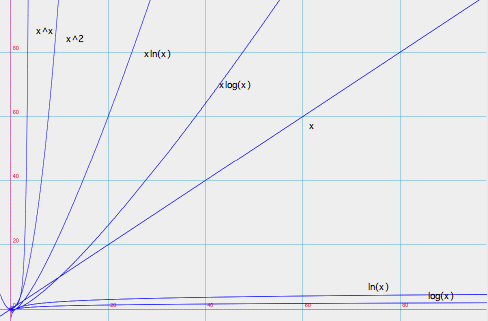

The above graph shows the relative growth rates of several common Big-O classes. In terms of sorting, x is taken as the number of elements in a list. Obviously you want your sort to be as fast as `possible for any value of x, so you'd like your sort to be of O(log(x)), for example. In reality, many sorts are actually of O(x^2) and O(xlog2(x)) [not shown] and O(log2(x)) [not shown].